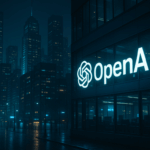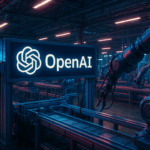Tesla (NASDAQ:TSLA) has been navigating legal challenges while aiming to transform its business strategy. After encountering roadblocks in Delaware courts regarding CEO Elon Musk’s compensation, Tesla is pursuing a new legal footing by reincorporating in Texas. Tesla’s strategic shifts are also evident in its plans to expand beyond its electric vehicle roots into artificial intelligence and robotics, signaling a significant departure from its traditional operations. These developments are unfolding as the company’s stock has seen a decline, yet investor interest remains piqued, especially with the new compensation deal for Musk.
Tesla’s struggles with obtaining court approvals for Musk’s compensation have been ongoing, repeatedly encountering denials that cited governance concerns. Prior attempts faced significant opposition, yet the company now introduces a $29 billion interim CEO award. Tesla views this as a temporary measure while awaiting further developments. The interim award comes with stipulations to prevent Musk from receiving overlapping rewards.
Will Tesla’s new interim CEO award meet its intended purpose?
This new interim award to Musk is valued at $29 billion and includes 96 million restricted shares. A critical clause in this package ensures that if the original compensation package eventually receives approval, Musk wouldn’t benefit twice from the same incentives. Tesla’s shareholder letter emphasizes potential growth in AI and robotics, suggesting plans that extend the company’s future beyond EVs.
How do AI and robotics fit into Tesla’s strategy?
Tesla is potentially positioning itself as a major player in AI and robotics. The company’s narrative includes the evolution of its Full Self-Driving software, which could revolutionize transportation by creating a robotaxi network. Musk envisions the network generating significant recurrent income, potentially surpassing traditional car sales. Despite competition from Waymo and Cruise, Tesla aims to leverage its experience and data to maintain a competitive edge.
Beyond current challenges, Tesla’s endeavors in AI and robotics could redefine its identity, with the Optimus humanoid robot illustrating this broader vision. This expansion aims at domestic and industrial applications, an emerging market promising significant revenue diversification. The financial implications of entering these sectors are extensive, as they involve substantial investment, possibly affecting short-term profitability. Despite potential risks, Musk’s history of overcoming obstacles supports the notion that these new ventures might succeed.
Regulatory scrutiny remains a substantial hurdle in Tesla’s pursuit of advancements in autonomous technology. Moreover, the competitive landscape in AI and robotics is robust, with tech giants and budding companies striving for market shares. Nonetheless, Tesla’s considerable data resources collected from its vehicles contribute to a unique advantage in developing and refining AI models.
The compensation initiative for Musk and the strategic shift towards AI and robotics exhibit Tesla’s intent to widen its business scope. As the interim award suggests a stop-gap measure amidst ongoing legal and strategic changes, Tesla’s plans attempt to align with burgeoning tech opportunities. Long-term investors may find these shifts appealing, viewing them as a pathway to significant returns.
Tesla’s current maneuvering through court disputes and technology expansions reflects the company’s ambitious approach to overcoming existing challenges while venturing into uncharted territories. The move to redefine itself through AI and robotics suggests that substantial growth potential remains in these sectors, provided that Tesla effectively manages inherent risks. Whether Musk’s new compensation plan and technological aspirations culminate in the anticipated systemic changes will depend on various external and internal factors influencing Tesla’s trajectory.










